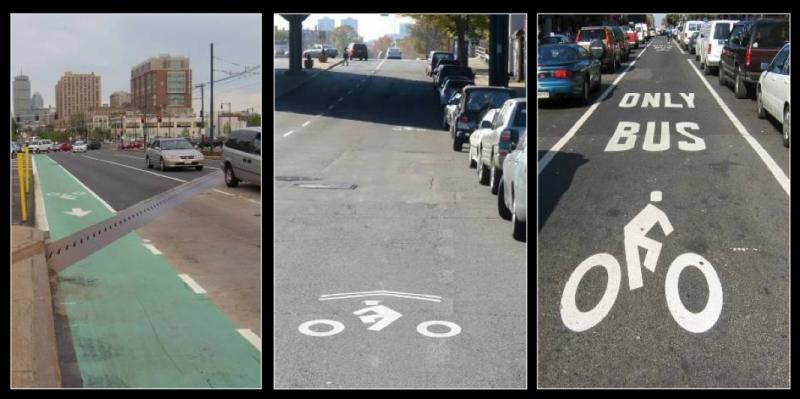Over at Worldchanging.com, Warren Karlenzig proposes ten big trends in sustainability. Five of the items speak directly to the importance of putting sharing at the center of a sustainable world:
1. Bikes Culture 2.0
Time period: 2010-2019
Around the world, bicycles are becoming a potent talisman of our urban post-carbon future. The city of Copenhagen is making noise to replace the Little Mermaid of Hans Christian Andersen fame with something two-wheeled. Copenhagen residents use bikes for 37 percent of all their transit. But bikes in Europe represent more than utility; riding a bicycle with the Velib' bikeshare program in Paris now easily competes (42 million registered users) with taking a spring walk along the Seine. Bikesharing abounds in dozens of European cities as well as in Rio de Janeiro and Santiago, Chile. Look for North American burgs to continue their proliferation of bicycles-as-transit use and bike lane expansion (NYC bicycle use is up 61% in two years). Bikesharing on a large scale should follow new programs in Montreal, Washington DC, and Minneapolis. Note to China: time to reclaim your status as the world's "bicycle kingdom."
Indoor bicycle parking will be common in commercial garages and offices even in businesses like cafes, bars (Gastalt Haus in Fairfax, California, is pictured above), stores and restaurants. On public transportation bicycles will be allowed access at any time. In short, bicycles and their riders will become legit, which will influence fashion, the economies and the design of cities in particular.
2. Mexico City, Climate Change, and the Future of Cities
Time Period: November-December 2010
Because "Nopenhagen" was a semi bust, the Mexico City United Nations Climate Change conference is taking on much bigger proportions than initially envisioned. The UN COP15 Copenhagen conference resulted in no binding treaty status among any of the attending 128 nations that attended for them to reduce global greenhouse gas emissions. This year's late fall gathering in Mexico City is likely to set national binding targets for greenhouse gas emissions. If enacted, these targets will set the stage the coming entire decade's greenhouse gas reduction strategies, including sub-national efforts at the regional and city level. After disappointment in Copenhagen, UN Secretary Ban Ki-moon lost no time in preparing for Mexico City, calling on world leaders to sign a legally binding carbon-emission reduction treaty and to contribute to a multi-national fund for developing nations that will be opened this month. Let's hope such a fund adequately addresses sustainable urban development in Asian cities, whose currently unregulated hyper-growth is expected to contribute more than half the world's greenhouse gas increases between now and 2027.
4. The marriage of ICT and Green Cities
Time Period: 2013-2019
Called "the great digital underbelly" of new and retrofitted sustainable cities by Gordon Feller of Urban Age, green ICT (information and communications technologies) holds promise for increasing the energy and resource efficiency of most aspects of urban development. If these technologies can offset their operating and production resource impacts (estimated to use 2-3 percent of total industry energy used, but forecast to double by 2022), the world could benefit from initial increased efficiencies in the 15-25 percent range. A crowded field of IBM, Cisco, General Electric, Siemens and others is positioning for implementing new ICT for sustainability in cities, demonstrating applications at the pilot project level. Cities with pilot or operating projects in green ICT include Amsterdam, San Francisco, Masdar City (United Arab Emirates), Seoul, London, Singapore, Beijing, New Delhi, Mumbai, Stockholm and Oslo. The following are Green Smart City applications and examples of companies involved:
- Traffic congestion monitoring and pricing systems: IBM, Capita Group o water applications (leakage detection, purification): IBM, Siemens
- Building applications (sense-and-respond technologies to monitor temperature, light, humidity and occupancy): Johnson Controls, Siemens, IBM
- Intelligent public transportation and logistics: PwC, Samsung, Cisco
- Public shared offices with telepresence (pictured above): Cisco, Hewlett-Packard
- Home and office smart appliances that can tie in with smart grid energy applications: General Electric, AT&T, Whirlpool
- Smart grids: General Electric, Schneider Electric, SAP, Oracle, ABB
- Data centers for cities: Google, Hewlett-Packard, Cisco
- Carbon inventories and carbon accounting: Microsoft, Oracle
8. Focus on Urban Agriculture and Foodsheds
Time Period: 2012-2019
As fuel prices rise and unexpected energy shortages occur, food prices will rise rapidly, especially for food that must be transported long distances via airplanes, stored and processed. The alternative is greater local and regional food production in and around cities.
Existing cities in Latin America (Havana, Cuba–pictured above–and Quito, Ecuador), Africa (Dar Es Salam, Tanzania; Kampala, Uganda) and Asia (Seoul, South Korea), have produced significant quantities of produce or aquaculture within their city limits. Cities in North America that have maintained or are building or rebuilding strong regional food networks include Seattle, Honolulu, Boston, Philadelphia and San Francisco.
Some newly planned cities are being engineered to produce significant amounts of food that can also be used as a potential energy source or rich compost nutrient. Examples include Masdar City in Abu Dhabi (United Arab Emirates) and a supposedly scalable community plan called NewVista that is expected to be prototyped in the United States and in Asia: both are innovating the production of food from algae and other low-energy input nutrient sources.
9. Resiliency planning: cities, towns, homes
Time Period: 2010-2019
Resiliency is about making a system or one's self stronger and more able to survive adversity. As the previous items portend, there will no shortage of adversity during the coming decade from climate change and energy supply instability. One of the major social phenomena related to resiliency has been the emergence of the Transition Town movement, which has grown from a few villages in the United Kingdom to Barcelona, Spain, Boulder, Colorado, and Sydney, Australia. The founder of the phenomena, Rob Hopkins, also a Post Carbon Institute Fellow, has used his transition model of Totnes, United Kingdom, to devise a global organizational playbook.
The purpose of transition thinking is to prepare people for potential shortages in global energy supplies and food caused by peaking oil and climate change. In contrast to earlier "off-the-grid" movements of the 1970s, Transition Towns can be located in urban neighborhoods as well as in the distant boonies, and they focus on community-scaled solutions in transportation, health, economics and people's livelihoods and personal skills. Tactics of local groups vary widely, with events ranging from the familiar–clothing swaps and art festivals to the seemingly more obscure–"unleashings,"–to policy-laden activities, such as launching a long-term (15-20 years) "Energy Descent Action Plan." The emphasis is on understanding and using collective community resources, including knowledge and skills, that people have in their own sphere of influence, versus waiting for top-down government decrees.









